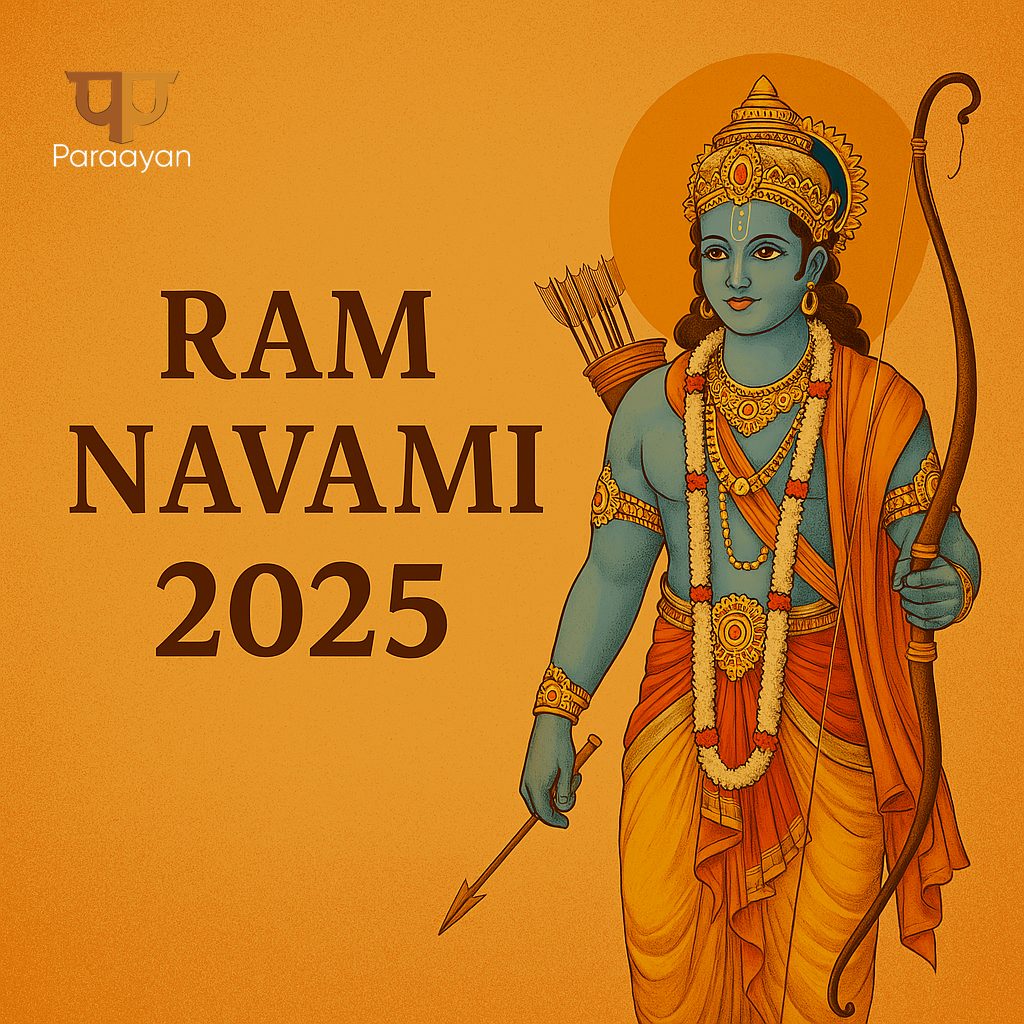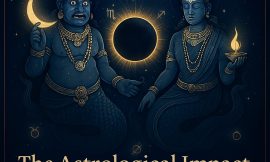Ram Navami is one of the beloved festivals in India. This festival celebrates the welcome the seventh Avatar of Shri Hari Vishnu i.e. Lord Rama. As per Vedic Astrology, Ram Navami falls on the Ninth Day of Shukla paksha in Chaitra Month. Devotees all over India sing the glories of Lord Rama. People sing bhajans and kirtans and the atmosphere is filled with fun and joy.
Few lines of the Ram Raksha Stotram:
राम राम रामेति रमे रामे मनोरमे ।
सहस्रनाम तत्तुल्यं रामनाम वरानने ॥
Temples dedicated to Lord Rama are lit up with diyas and lighting. Havanas are organised at different locations to obtain peace and purify the mind and soul. Worshipping lord Rama with utmost devotion brings happiness and prosperity to the lives of people.
Ram Navami Katha
According to Ramayan, King Dasharath and Queen Kausalya gave birth to Lord Rama during the Treta Yuga. Lord Rama accompanied by Maa Sita was sent to exile for 14 years by his father Dasharath. This was rather a demand from his step wife kaikeya. All this was done to make Rama’s stepbrother Bharath the new king of Ayodhya.
During the course of Rama and his wife Sita’s stay at Upvan. One day a demon lady named Surpanaka disguised as a beautiful woman came to their hut. Enchanted by Lord Rama’s beauty she expressed her desire to marry Lord Rama.
Lord Rama was already married to Sita he pointed towards Lakshman who could have a chance at marrying her. Lakshmana also refused her offer. Enraged by this the demoness revealed her true self. The moment she did so Lakshman Ji cut off her nose. She ran away with her bleeding nose.
Surpanakha went straight to her brother Ravana and told him about the whole incident. Enraged by this, Ravana made a plan and came disguised as a Sage. He kidnapped Maa Sita and brought her to Lanka to take revenge for his Sister’s insult. Bhagwan Ram thus reached Lanka with his Vanarsena and killed Ravana. This day is celebrated as Ram Navami marking the Victory of good over evil.
Significance of the Name “Rama”
Ra means divine light of consciousness that lightens up the truth.
Ma means the truth that a divine light stays within all of us.
Lord Rama depicts a courageous personality. He is called the “Maryadapurushottama” means one who respects all women and takes care of all his duties and responsibilities. Worshipping Lord Rama bestows people with strength, agility, stability and success.
His teaching inspired people to walk on the path of reality, principles and moral values. He was a kind king who served his subjects with love and care.
Ram Navami Celebrations Across Popular Temples in India
- Ayodhya Temple
Ram Lala temple of Ayodhya. This temple has a huge idol of Ram Lala. The idol depicts the childhood form of Lord Rama.
Since Ayodhya is the birthplace of Shri Ram this temple has a very significant importance.
During Ram Navami people in Ayodhya light their houses with lamps. People decorate the Ayodhya temple with diyas and lamps. Religious pooja and homams are performed. There is a Rath Utsava organised during this day where a beautiful chariot is decorated carrying Lord Rama’s idol,
- Bhalchandra Temple
Bhalchandra is a place in Telangana. A temple solely devoted to Lord Rama. There is a Grand Celebration on the banks of the river Godavari on Ram Navami Day. Bhalchandra Temple serves as a main spot for all Ram Navami Celebrations.
- Kodandrama Temple
Kodandrama Temple is situated in the small town of Vontimitra in Tamil Nadu. A divine temple that celebrated Ramnavami with enthusiasm.
- Rameshwar Temple
A beautiful temple located on the islands in Tamil Nadu. It is said that a beautiful bridge was built during the Treta Yug by Bhagwan Ram and his Vanar Sena from Sri Lanka to Rameshwar.
- Janaki Temple
Amid the birthplace of Sita Maa Sitamarhi lies an enchanting temple known as Janaki Temple. During Ram Navami, the temple is adorned with colourful flowers. It is a famous temple for Ram Navami Celebrations. One day fair is organised in the temple vicinity ground.
Importance of Using Kumkum for Special Ram Pooja
Kumkum, also known as Roli, is a red coloured powder used to apply on the forehead of the Lord Ram idol. Astrologers consider applying kumkum powder on the forehead between the eyebrows. As it helps connect with divinity through the spiritual awakening of the third eye chakra.
Try our Parayaan Upaanga Kumkum powder, which is made from a unique combination of premium turmeric and limestone. It is free from industrial dyes and harmful chemicals. All these properties make it completely safe for the skin.
It is exclusively made with specialised karma kanda practises and induced with powerful mantras. The best part of the kumkum is that it doesn’t leave any stains or residue after washing it with water. Make your ritual sacred and special with our pure Upangaa Kumkum Powder.
Significance of using Sandalwood for Special Ram Pooja
On the other hand, sandalwood also known as Chandan has purifying qualities. Chandan is usually used for Havana, rituals, pooja and bathing of the Ram Deity. Its nature is incredibly calming and cool. You can also use Sandalwood in the form of powder, incense sticks, and dhoop.
Try our Special Parayaan Upaanga Sandalwood Powder that arrives in both red and yellow chandan. The Chandan is safe to use and free of talcum powder, adulterants, chemical dyes and multani Mitthi (fullers earth). Highly suitable to use for ram navami rituals and havana.
You can also create Urdhava Pundra which is a special marking on the forehead of the idol along with classic tika. Applying it to three points of the deity such as Vishuddhi chakra (throat), Anahata chakra (chest) and agna chakra (forehead). Safe for the skin and can be use by people of all ages for Special Ram pujas.
If you want to elevate your experience further try using Upaaga pure fragrance sandalwood dhoop which will fill the temple and your home pooja altar with a sweet aroma. They are ideal ones for Ram pooja and other rituals. The special part is its organic bamboo less cones that will add a special essence to your homams. You can also use these dhoop cones to enhance your spiritual practises to the next level.
Shubh Muhurat of Ram Navami
The Auspicious time to worship Lord Rama starts from 06th April from 11:08 am to 01:39 pm. Other auspicious times during this day are as follows:
| Specific Time of the Day | Exact Time |
| Brahma Muhurta | 04:34 am to 05:20 am |
| Vijay Muhurta | 2:30 pm to 0:30 pm |
| Sandhya Muhurta | 6:41 pm to 7:03 pm |
| Nishita Muhurta | 12 am to 12:46 pm |
Ram Pooja Vidhi to be performed on Ram Navami
Here is a step-by-step guideline you can follow to perform the Ram Ritual
- Wake up during Bhrama Muhurta.
- Bath and wear clean clothes.
- Take Sankalpa for worshipping Lord Rama.
- Observe a fast during Ram Navami.
- Sprinkle Gangajal on the Wooden plank (Chowki) and cleanse your house.
- Spread a yellow cloth over the wooden stand.
- Place Lord Rama’s Idol on it.
- Also place other idols of Maa Sita, Lakshman Ji and Shri Hanuman besides Lord Rama’s idol.
- Do Ram Abhishekha by using Panchamrit ie. Honey, milk, ghee, yoghurt and sugar.
- Apply special Parayaan Upaaga Kumkum and Sandalwood tilak.
- Lit a ghee lamp besides Lord Ram’s Idol.
- Burn parayaan dry energized fragrance bambooless Sandalwood Dhoop cones.
- Offer flowers to Lord Rama’s idol
- Chant Ram Raksha Stotra and Ram Chalisa with utmost devotion.
- Bow down to Ram Bhagwan and ask to bless you with happiness and prosperity.
- Perform Ram Aarti and offer naivadya such as Kheer and sweets.
- Donate food and money to the needy.
- Offer bhraman Bhojan is considering highly auspicious.
श्री राम, जय राम, जय जय राम II
Other important things to consider:
- Visit Ram Temple to seek Lord Rama’s blessings
- Listen or read Ramcharitra Manas.
- Do not engage in eating tamasic food like meat, alcohol and fish.
- Eat a Satvik diet full of fruits and vegetables.
- Those who are fasting on this day can drink milk and eat Falahara along with fruits.
- Go for Ram Kirtans and Bhajans at various Ram Temples.
Conclusion
Ram Navami is an asthetic day to connect with divinity. It is not a mere festival but a call for humanity to walk on the enlighted path of Shri Rama. The festival is about embracing integrity, dharma and compassion in life. By observing fast visiting temples and performing special ram pooja and Havana one can honor Shri Ram’s birth and seek blessings from him.



